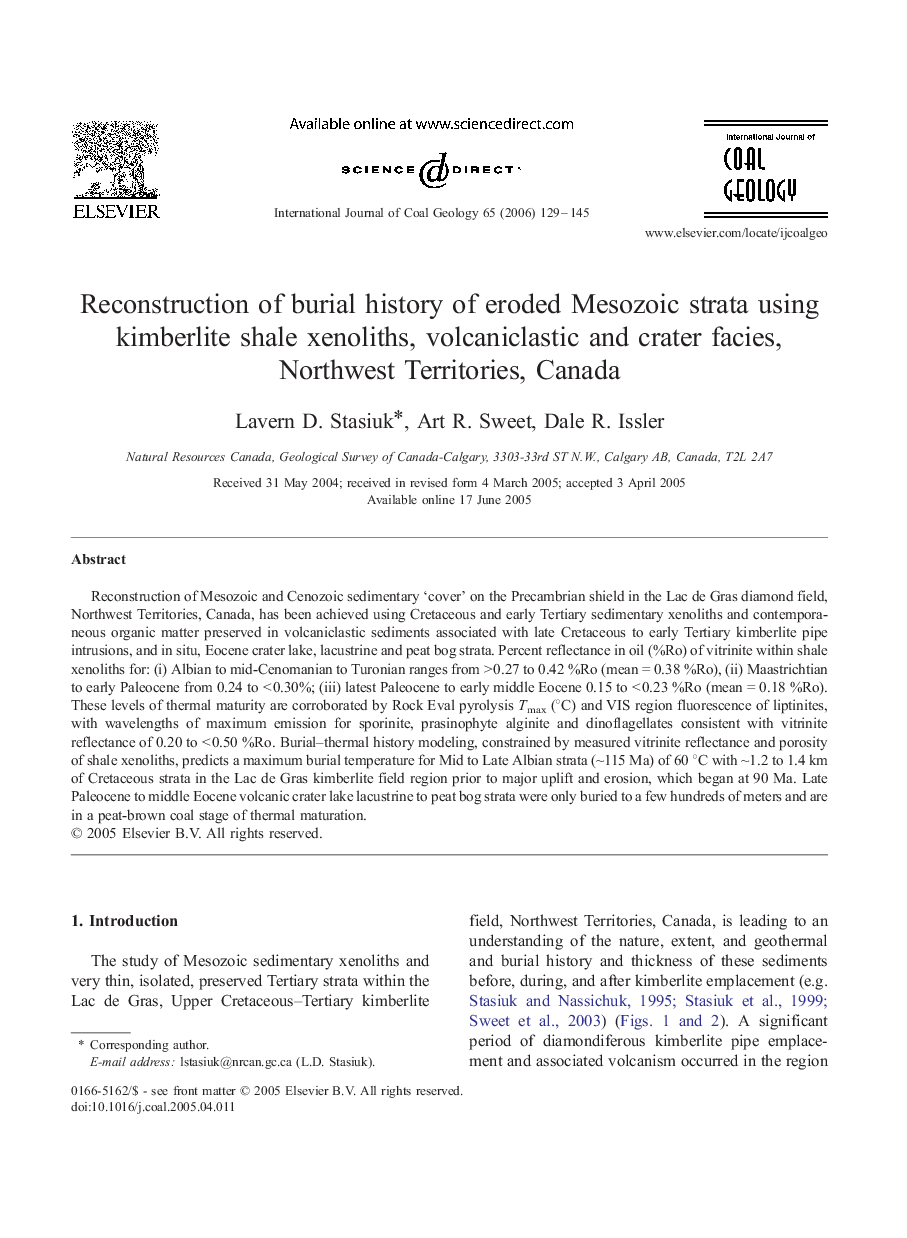| Article ID | Journal | Published Year | Pages | File Type |
|---|---|---|---|---|
| 1754354 | International Journal of Coal Geology | 2006 | 17 Pages |
Reconstruction of Mesozoic and Cenozoic sedimentary ‘cover’ on the Precambrian shield in the Lac de Gras diamond field, Northwest Territories, Canada, has been achieved using Cretaceous and early Tertiary sedimentary xenoliths and contemporaneous organic matter preserved in volcaniclastic sediments associated with late Cretaceous to early Tertiary kimberlite pipe intrusions, and in situ, Eocene crater lake, lacustrine and peat bog strata. Percent reflectance in oil (%Ro) of vitrinite within shale xenoliths for: (i) Albian to mid-Cenomanian to Turonian ranges from > 0.27 to 0.42 %Ro (mean = 0.38 %Ro), (ii) Maastrichtian to early Paleocene from 0.24 to < 0.30%; (iii) latest Paleocene to early middle Eocene 0.15 to < 0.23 %Ro (mean = 0.18 %Ro). These levels of thermal maturity are corroborated by Rock Eval pyrolysis Tmax (°C) and VIS region fluorescence of liptinites, with wavelengths of maximum emission for sporinite, prasinophyte alginite and dinoflagellates consistent with vitrinite reflectance of 0.20 to < 0.50 %Ro. Burial–thermal history modeling, constrained by measured vitrinite reflectance and porosity of shale xenoliths, predicts a maximum burial temperature for Mid to Late Albian strata (∼115 Ma) of 60 °C with ∼1.2 to 1.4 km of Cretaceous strata in the Lac de Gras kimberlite field region prior to major uplift and erosion, which began at 90 Ma. Late Paleocene to middle Eocene volcanic crater lake lacustrine to peat bog strata were only buried to a few hundreds of meters and are in a peat-brown coal stage of thermal maturation.
